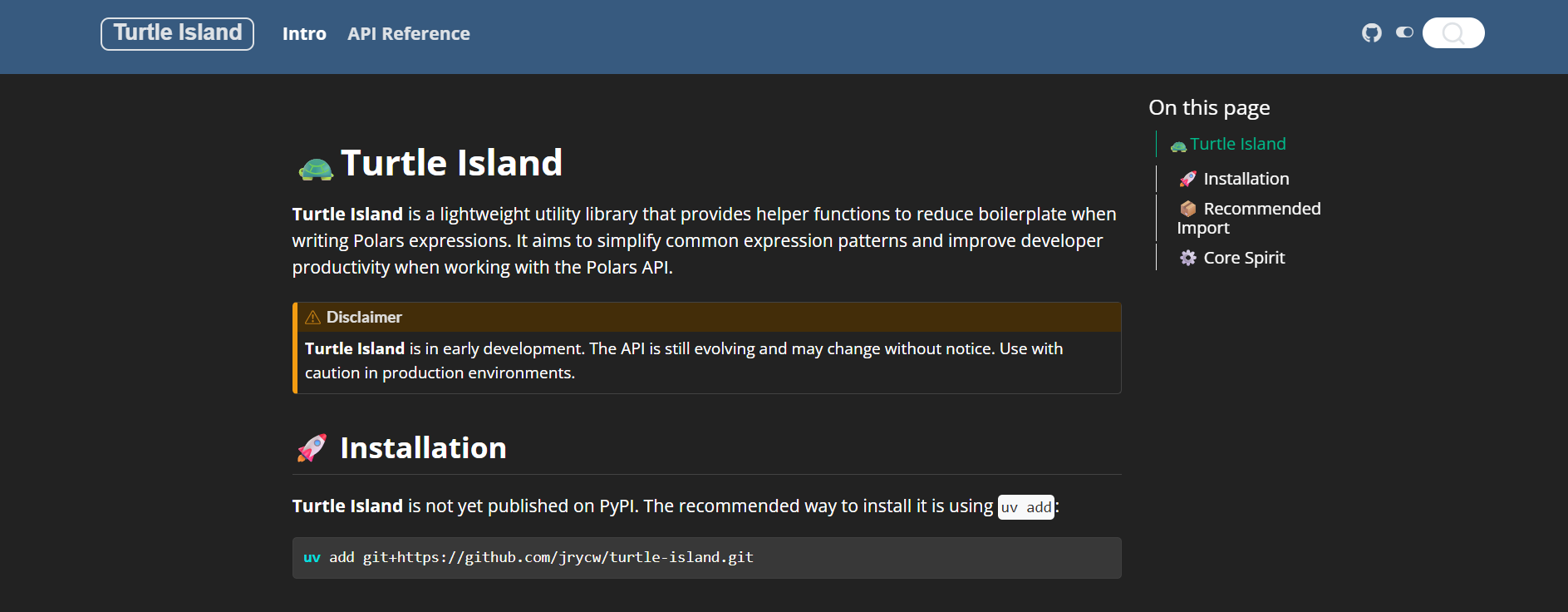
This is a short post documenting some things I often forget while building Turtle Island.
Output Column Names
In Polars, if an explicit name isn’t provided, the output column will take the name of the first expression. This default behavior is generally helpful, but it can lead to unexpected results—especially when the first expression doesn’t directly represent a column. For example, if the first expression is pl.lit(), the resulting column name will be "literal".
This isn’t a big issue when dealing with a single column, but it becomes problematic when using expressions like pl.all() or pl.col("*"). In such cases, logic that depends on column names often breaks.
My current workaround is to tweak the internal logic so that the returned expression doesn’t start with something like pl.lit(), especially in functions that aim to support wildcard expressions.
Expression Context vs DataFrame Context
Since Polars expressions are designed to be evaluated later (not immediately), we cannot rely on any runtime properties of the DataFrame when building them. That means things like the shape or number of rows in the DataFrame are not available during expression construction.
However, some built-in Polars functions help bridge this gap. For instance, pl.len() returns an expression that can be used to represent the number of rows in the future evaluation context. This is useful for writing general-purpose logic in Turtle Island.
A major caveat is that Polars expressions can’t be evaluated directly in Python. You can’t write something like if pl.len() or pl.len() + 1 as regular Python code. These expressions must be used inside other Polars expressions or functions—such as pl.int_range(0, pl.len() + 1)—where they’ll be correctly interpreted and evaluated within the Polars execution context.
This post was drafted by me, with AI assistance to refine the content.